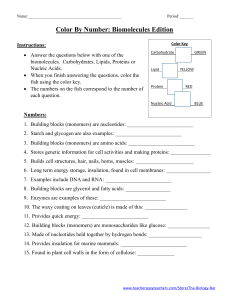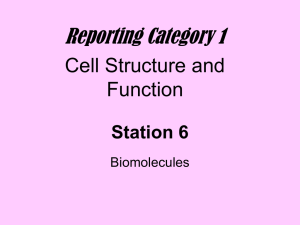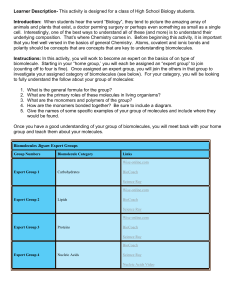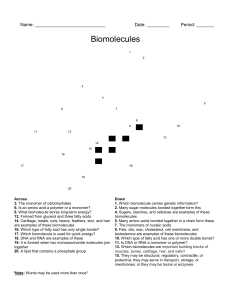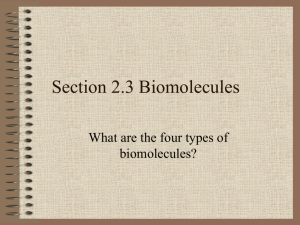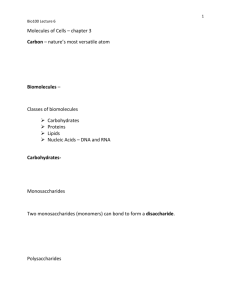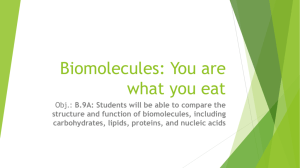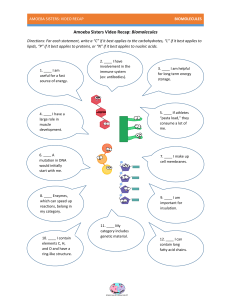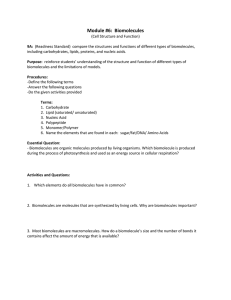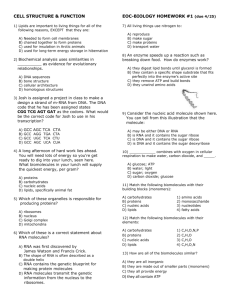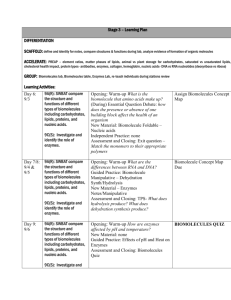Biomolecules Review Worksheet: High School Biology
advertisement
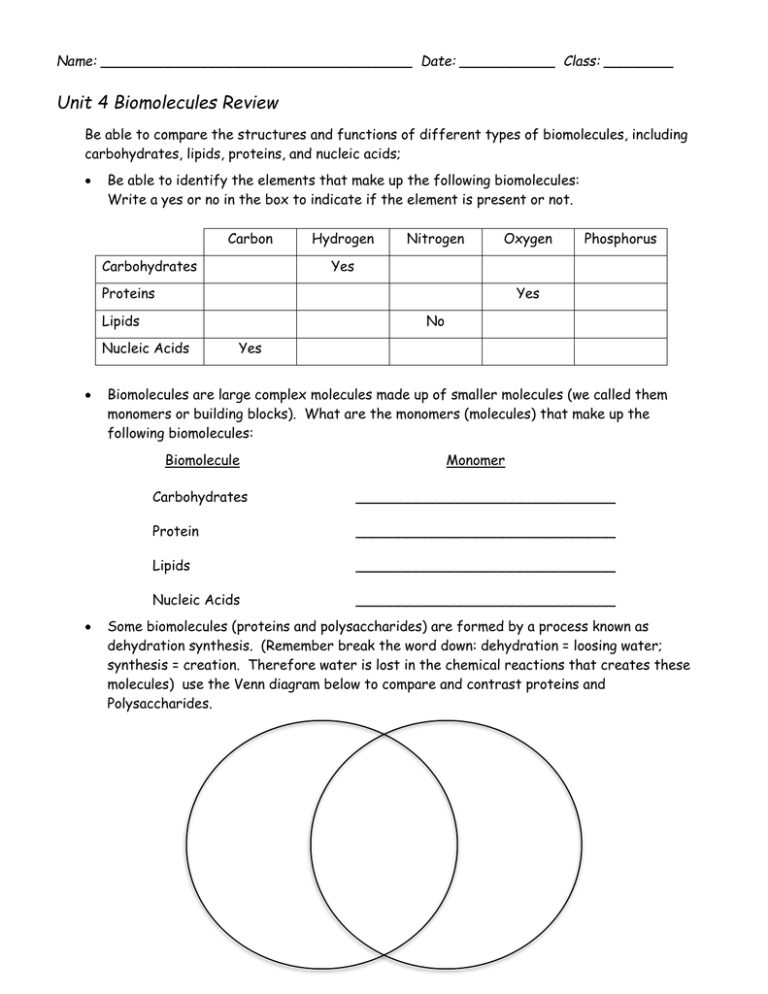
Name: ____________________________________ Date: ___________ Class: ________ Unit 4 Biomolecules Review Be able to compare the structures and functions of different types of biomolecules, including carbohydrates, lipids, proteins, and nucleic acids; Be able to identify the elements that make up the following biomolecules: Write a yes or no in the box to indicate if the element is present or not. Carbon Carbohydrates Hydrogen Nitrogen Oxygen Yes Proteins Yes Lipids No Nucleic Acids Yes Biomolecules are large complex molecules made up of smaller molecules (we called them monomers or building blocks). What are the monomers (molecules) that make up the following biomolecules: Biomolecule Phosphorus Monomer Carbohydrates ______________________________ Protein ______________________________ Lipids ______________________________ Nucleic Acids ______________________________ Some biomolecules (proteins and polysaccharides) are formed by a process known as dehydration synthesis. (Remember break the word down: dehydration = loosing water; synthesis = creation. Therefore water is lost in the chemical reactions that creates these molecules) use the Venn diagram below to compare and contrast proteins and Polysaccharides. Nucleic acids are made of monomers called nucleotides. Identify the parts of a nucleotide like the one shown below. Write your answer in the arrow provided. In our identifying nutrients lab, we looked at several tests to identify nutrients in the foods we eat. Identify what biomolecule each test listed below tests for. Benedict test ______________________________ Lugol (iodine) test ______________________________ Biuret test ______________________________ Sudan Red test ______________________________ Identify the results for the following foods by using a + or – in the appropriate box Substance Benedict test Lugol (iodine) test Biuret test Apple juice Brown beans Steak Identify the chemical structures shown in the diagrams below. Sudan Red test What are the characteristics and functions of enzymes? What is the function of an enzyme in a cell? Be able to identify what is happening in a catabolic reaction. What is happening in an anabolic reaction? Be able to identify the roles of enzymes in the digestive process. Catalase is an enzyme that is found in the tissues of plants and animals (even us). o Catalase (enzymes) are a modification of what type of biomolecule: o The above biomolecule is made up of repeating sub units (monomers/molecules) known as:
